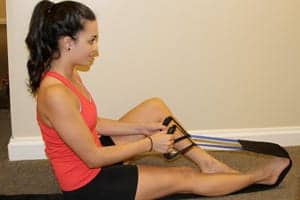Summary:
A recent clinical trial shows that integrating exercise and rehabilitation services from diagnosis onward significantly benefits breast cancer patients, supporting the use of programs like CORE in routine cancer care.
Key Takeaways:
- The CORE algorithm successfully connected patients with breast cancer to appropriate exercise or rehabilitation services based on their functional status, with high feasibility and completion rates.
- Participants reported that these services helped improve their physical function and manage post-treatment symptoms, enhancing their overall care experience.
- The study supports national efforts to embed exercise and rehabilitation into standard oncology care and offers a scalable model for clinics lacking such services.
A recent randomized controlled trial reveals the potential of a program designed to connect patients who have breast cancer to needed exercise and rehabilitation services starting at diagnosis and throughout care. Participants provided positive feedback about the program, supporting efforts to integrate exercise and rehabilitation services as part of routine cancer care. The trial’s findings are published by Wiley online in CANCER, a peer-reviewed journal of the American Cancer Society.
Exercise services for individuals with breast cancer can improve functional deficits, fitness, and strength. Rehabilitation services treat neurological and musculoskeletal deficits, such as impaired shoulder range of motion and peripheral nerve injury. Depending on where a patient is on the cancer care continuum, they may require both services concurrently or in tandem.
The 24-week clinical trial assessing exercise and rehabilitation services for patients with breast cancer involved a program, or clinical workflow algorithm, called CORE (Comprehensive Oncology Rehabilitation and Exercise). A total of 72 U.S. patients with newly diagnosed stage I–III breast cancer requiring surgery as first-line treatment were randomized 2:1 to CORE or standard of care.
Based on patient questionnaire responses regarding self-reported exercise and functional status, patients were triaged to receive an exercise service, a rehabilitation service, or were instructed to exercise on their own (exercise self-management, which was not a service). The exercise self-management group was for individuals who reported meeting physical activity guidelines with no declines in function. The exercise service involved a hospital-based exercise oncology program. The rehabilitation service was provided for individuals with complex functional deficits of the neurological, musculoskeletal, or cardiopulmonary systems and involved assessments to see if the patients needed physical therapy.
Ninety-three percent of participants in CORE completed the triaging process, indicating that the algorithm was feasible. Among those triaged to a service, 62% completed the service program to which they were referred.
Overwhelmingly positive feedback was noted from study participant focus groups. For most patients, the connection to exercise and rehabilitation services greatly helped treat their symptoms after cancer treatment. They also reported that exercise and rehabilitation services throughout their care had a positive impact on their physical activity engagement and physical function.
“CORE may serve as a model workflow algorithm aimed to integrate both exercise and rehabilitation services from time of diagnosis and beyond. Findings from this trial support national efforts led by the American College of Sports Medicine to integrate exercise and rehabilitation services as part of routine cancer care,” says senior author Adriana M. Coletta, PhD, MS, RD, an investigator at Huntsman Cancer Institute at the University of Utah. “If other cancer centers and clinics do not have exercise or rehabilitation services embedded in their institution, they could use the algorithm and triaging tool in coordination with the American College of Medicine’s Moving Through Cancer Exercise Program Directory.”
Featured image: Dreamstime





